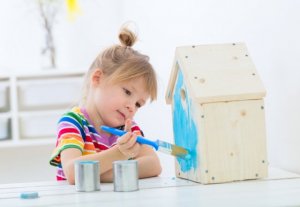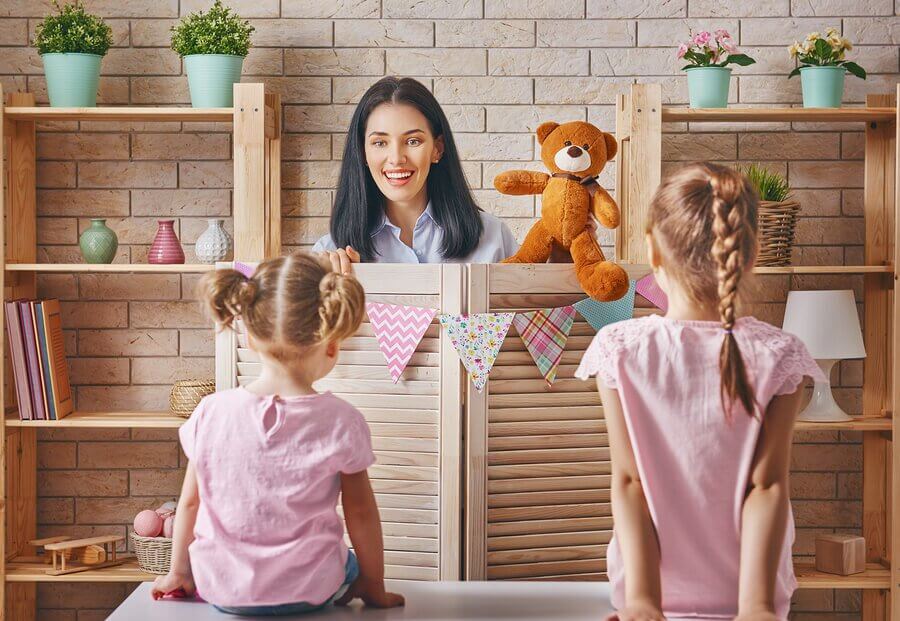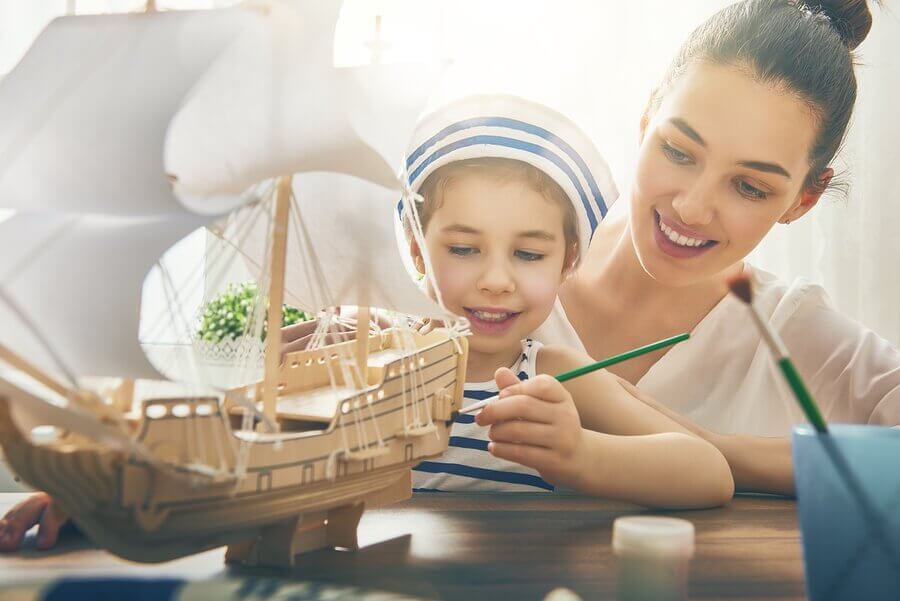Activities for Children at Home

Children need constant activity in order to burn energy, have fun, and eat well, among other things. These activities for children at home will help prevent boredom and chaos from making their way into your daily life.
You don’t need complicated or expensive plans for your kids to entertain themselves. With just a little imagination, they can have hours and hours of fun. Getting out of the routine and relaxing a little together will help you strengthen your bond as well as have a great time.
When choosing activities for children at home, you need to remember that it depends on their age, interests, personalities, and needs. Keeping these factors in mind, you can make activities that they’ll love and that are appropriate for them.
Activities for children at home
From 1 to 3 years old
This stage can be a challenge, since it’s when kids first start to develop physical abilities and want to use them. As you know, there’s nothing that will stop them. Children in this age range are very active, full of curiosity, and want to explore the world around them.
Even when they start to become more independent, they still don’t know how to relate to other children. That’s why they prefer to play with other adults. Kids learn to socialize through observation, so the best activities are:
Puppets and costumes
Collect some old clothes or costumes and put everything in a box. Find a story that calls for special outfits so that everyone can be a character and have lots of fun.
Also, puppets are a great educational tool. You can make small conversations, have fun, and instill values. All you need are some old accessories, paper bags, and a lot of imagination to give life to the characters.

Build and take apart
Teach your children how objects work, and differentiate them by their shape and size. You don’t need to buy toys, since you can find many ways to make this activity at home of putting things inside holes that fit them.
For example, you can use a colander and uncooked spaghetti to put into the small holes. In addition, this is an excellent activity to help them develop fine motor skills.
From 4 to 6 years
During the pre-school stage, they play lots of games to stimulate learning. With them, you can increase or decrease difficulty based on each child’s individual skills.
Children’s personalities also play an important role. While some like sitting quietly, some like physical activity.
If you want to develop your children’s visual or spatial orientation, here are some activities for children at home that will let them have fun while they learn:
Card games
Take a card and have your child do the same. Whoever has the highest value wins. This type of game can help improve memory and attention.
Adding and comparing cards are great tools for fun learning. Also, while they shuffle and deal, they’re developing fine motor skills.
Scavenger hunt
Collect several small objects and hide them in different parts of the house. Then, make a map and a checklist for each thing your child finds. After preparing everything, give your child the instructions.
You can help him by telling him that he’s “cold” (far away) or “hot” (very close) throughout the game. At the end, the prize can be some sort of candy that serves as his treasure.
Activities for children at home from 6 to 7 years old
From 6 years old, games become reinforcement of everything they’re learning in school. Therefore, they help kids control their emotions, develop their personality, build independence, and improve self-esteem. Some activities you can do with your children at this age are:

Crafts
Start a short- or long-term project with your children at home, and teach them activities where they can use their hands to create and express themselves.
Take advantage of that moment to share a special time with them. There are thousands of ideas you can get on the internet that are inexpensive and use materials you already have at home.
Board games
This is the best age to start playing board games, since children can understand and play by the rules. Some of the best benefits of board games are: learning to wait their turn (it seems simple but can be a challenge for some children), as well as strategic thinking and problem solving.
These are just some of the many activities for children at home you can do that are very inexpensive. By using your imagination, you can plan a fun afternoon full of learning where everyone is a winner at the end of the day. Have fun!
All cited sources were thoroughly reviewed by our team to ensure their quality, reliability, currency, and validity. The bibliography of this article was considered reliable and of academic or scientific accuracy.
- Cándano, S. (2013). La pintura beneficiosa para el desarrollo de los niños.
- Martínez, M. D. D., & Meneses, R. V. (2020). La escritura de cuentos: estrategia para potenciar el proceso escritor en niños. Linhas Críticas, 26.
- Pallarés Molina, C. (2013). El teatro de sombras. https://uvadoc.uva.es/bitstream/handle/10324/3200/TFG-B.233.pdf?sequence=1&isAllowed=y
- Panchi Culqui, W. E., Lara Chala, L. D. R., Panchi Culqui, J. C., Panchi Culqui, R. C., & Villavicencio Álvarez, V. E. (2019). Influencia de la música en el desarrollo motriz y emocional en niños de 8-10 años. Revista Cubana de Investigaciones Biomédicas, 38(2), 104-121.
- Sitly Group. (2019). Juegos para niños en casa: 15 ideas inmejorables para divertirse. [online] www.sitly.es. Disponible en: https://www.sitly.es/blog/juegos-para-ninos-en-casa-15-ideas/ [Fecha de consulta: 17 Jan. 2019].
This text is provided for informational purposes only and does not replace consultation with a professional. If in doubt, consult your specialist.
